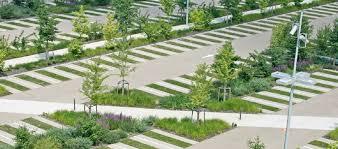For my one time challenge, I researched alternatives to cement. Cement is used for lots of different things and was quite broad to research alternatives. I chose to focus on one specific area of cement, which was parking lots. I chose this because of how it closely relates to my major of Sustainable Landscape Design. I have attached two examples of alternatives to cement parking. The first is using grass instead cement in the areas not run over frequently. This is more carbon sequestration reduces the urban heat island effect that cement can cause. The second is a picture of a stone parking lot. This parking lot has cracks in between the stones that allows the water to enter the ground and enter the water table. This helps reduce the carbon produce by cement by using a different paving, as well as mitigate storm water runoff.

